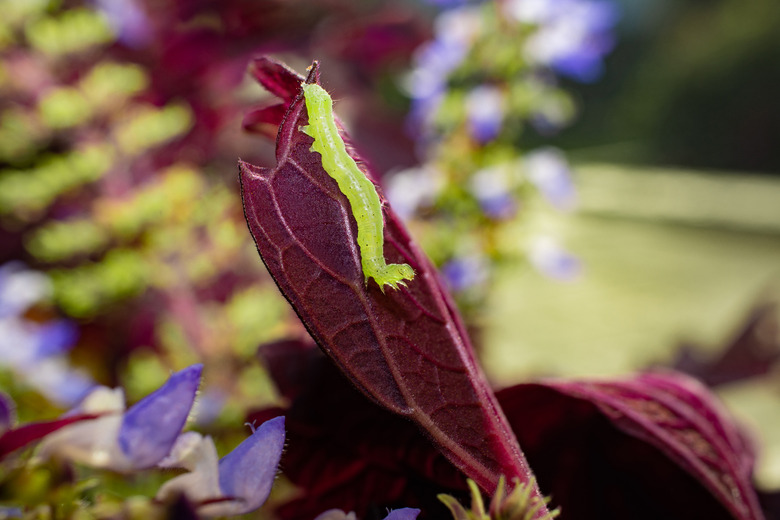Get Rid Of Caterpillars In Your Garden
We may receive a commission on purchases made from links.
They're colorful little cuties, but caterpillars are also steamrolling eating machines that leave outdoor greenery looking like Swiss cheese. Fortunately, there are ways to rid your garden of these destructive visitors. So gather some information and ramp up your anti-caterpillar campaign, and they can be under control before you know it — hopefully before the lush look of your garden has been destroyed.
A Bit About Caterpillars
A Bit About Caterpillars
Caterpillars are the larvae of butterflies and moths. Often carrying a segmented appearance, most have multiple pairs of legs and sport a colorful look that serves as protective camouflage. Voracious, leaf-eating species of caterpillars can decimate ornamental plants, shrubs, fruit trees, crops, and hardwood trees. Some can even eat three times their weight daily.
Natural Caterpillar Control
Natural Caterpillar Control
Caterpillars face many natural predators, among them wasps, parasitic flies, brown and green lacewings, ground beetles, spiders, and birds. These critters may keep the problem under control well enough to avoid massive damage, but if they don't, you may need to make your own contribution to natural caterpillar control by hand-picking them off plants and dropping them into soapy water.
The problem is that even though their damage is easy to see, the caterpillars themselves can be hard to find in your garden. They hide in rolled leaves, so you'll have to prune any that are found. If the work of natural predators combined with hand-picking doesn't remedy the problem and things are getting out of control, you can move on to other methods.
When considering escalating your fight against these hungry little visitors, it's good to remember that many of them will transform into butterflies and other insects that are welcomed by many. Avoid killing caterpillars that become butterflies by designating special butterfly attracting plants in your garden as off limits to any treatment, including plucking.
Above all, take care to avoid any insecticide that can kill pollinating and other beneficial insects. Use insecticides only when the problem is extensive and when natural, nonchemical approaches have failed. Even better, get your hands on a guidebook that will identify your particular garden visitors so you can be confident about which caterpillars to target.
The Best Treatment Options
The Best Treatment Options
In addition to protecting the butterfly larvae, you should take care to avoid any insecticide that can kill pollinating and other types of beneficial insects. There are two microbial-based insecticides good for caterpillar control that are still considered safe for humans and many of the insects we need to keep around.
Spinosad is considered particularly effective on a high number of caterpillar species, but it's prudent to avoid spraying the product or creating drift in areas inhabited by butterflies and caterpillars recognized as endangered or threatened. Spinosad is not a problem for beneficial insects and honeybees once the spray has dried, so protect pollinators by spraying at night so the product can dry before their daytime visits. Sold as a concentrate for spraying, spinosad can be used on ornamentals, vegetables, and lawns. Products on the market include:
- Fertilome's Natural Guard Spinosad Bagworm, Tent Caterpillar & Chewing Insect Control
- Bonide's Captain Jack's Dead Bug Brew
- Monterey Garden Insect Spray
Products using Bacillus thuringiensis var. kurstaki (Btk) are marketed for use only on caterpillars and are safe for use around bees and beneficial insects. They offer safe control of common leaf feeders but are less effective on soil-dwelling caterpillars that consume insignificant amounts of the product. The caterpillars must actually feed on leaves that have been treated.
Unlike spinosad, which effectively kills caterpillars for up to four weeks, Btk lasts for only a couple of days. Keep in mind when shopping that the liquid forms of this product are often referred to as Thuricide, while those that are dusted on the plants are referred to as DiPel. Products on the market include:
References
- Britannica: Caterpillar
- University of California Statewide Integrated Pest Management Program: Natural Enemies of Caterpillars
- University of California Statewide Integrated Pest Management Program: Leaf-Feeding Caterpillars
- Clemson Cooperative Extension Home & Garden Information Center: Less Toxic Insecticides
- Michigan State University: How To Control Invasive Pests While Protecting Pollinators and Other Beneficial Insects
- National Pesticide Information Center: Spinosad
- University of Connecticut Home and Garden Information Center: Spinosad
